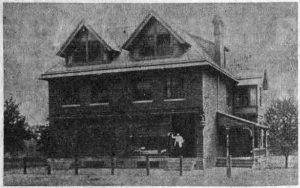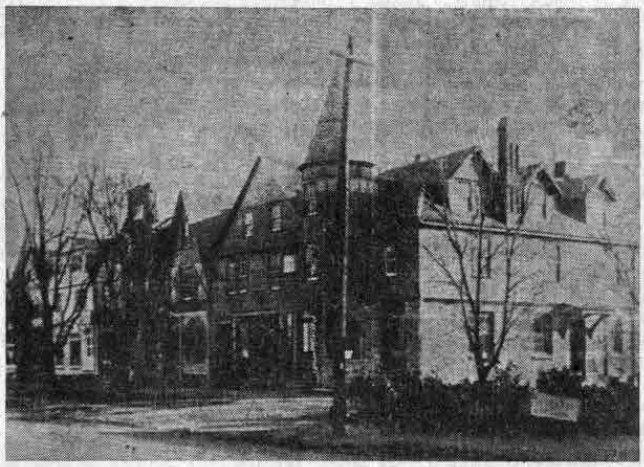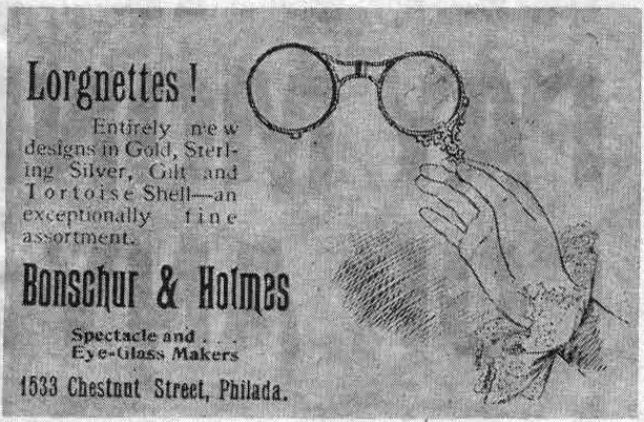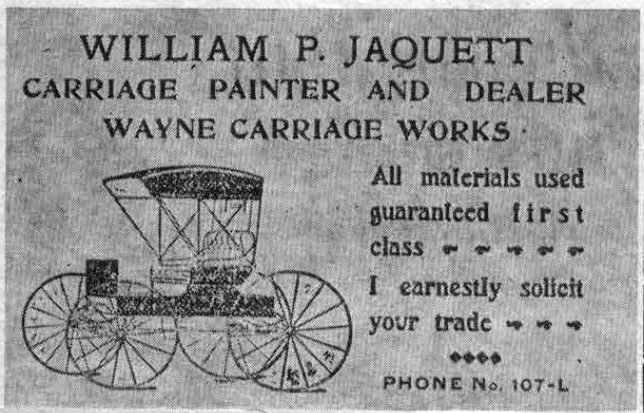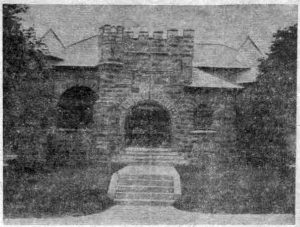In the October 30 column we showed three pictures of the interiors of one of the first Wayne Estate houses to be occupied, that of the George H. Schultzes, who moved into their home on Walnut avenue in 1888.
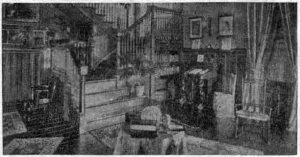 Since then a profusely illustrated booklet, put out by the Wayne Estate in the early 1890’s has come to us. Four remarkably clear photographs of interiors are among the collection of illustrations, three of which appear today. Since the houses in which they were located are not named in the booklet, it might be interesting to find out whether they can be identified by our readers.
Since then a profusely illustrated booklet, put out by the Wayne Estate in the early 1890’s has come to us. Four remarkably clear photographs of interiors are among the collection of illustrations, three of which appear today. Since the houses in which they were located are not named in the booklet, it might be interesting to find out whether they can be identified by our readers.
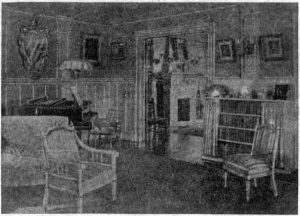 Of these illustrations and the many others in the booklet, the writer of it has said, “The pictures scattered through these pages are bits here and there, of the Wayne of today (1892), after five years of intelligent and systematic development. They give glimpses of the home-life as seen amidst the flowers and vines which enhance the beauty of the already picturesque houses. The interiors are cozy and home-like, and appeal to all that is best in man’s nature, for truly no more fitting surroundings could be found for the modern household… the interior views afford some idea of the coziness and comfort of the plans which give so much satisfaction to the happy possessors”.
Of these illustrations and the many others in the booklet, the writer of it has said, “The pictures scattered through these pages are bits here and there, of the Wayne of today (1892), after five years of intelligent and systematic development. They give glimpses of the home-life as seen amidst the flowers and vines which enhance the beauty of the already picturesque houses. The interiors are cozy and home-like, and appeal to all that is best in man’s nature, for truly no more fitting surroundings could be found for the modern household… the interior views afford some idea of the coziness and comfort of the plans which give so much satisfaction to the happy possessors”.
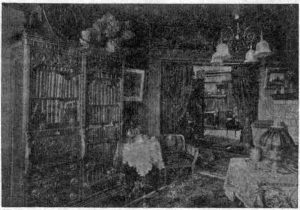 The flowery description of these Wayne Estate houses has already been noted in this column. This particular brochure abounds in such descriptions, each, however, with a ring of sincerity on the part of the writer. “Our dwellings, to be pleasant to us”, he says, “must not only express creature comforts, but be a part of our lives – the better part. Home, to be home, should have comfort and individuality in detail”.
The flowery description of these Wayne Estate houses has already been noted in this column. This particular brochure abounds in such descriptions, each, however, with a ring of sincerity on the part of the writer. “Our dwellings, to be pleasant to us”, he says, “must not only express creature comforts, but be a part of our lives – the better part. Home, to be home, should have comfort and individuality in detail”.
On another page, a quotation from Ruskin is employed to describe certain ideals of those who planned and built these houses of more than 60 years ago. “I would have our ordinary dwelling-houses built to last and built to be lively, as rich and full of pleasantness as may be, within and without, as such might best suit and express each man’s character and occupation and in part, his history”.
Colonel George E. Waring, Jr., is quoted as saying of the community in general, “There are no manufactories; there is no business, beyond the few retail stores required by the population; no liquor is sold in the place, and the conditions of the sale of property are such as to prevent nuisances of any sort. The houses are of good architectural effect, the lots are large, and it is not too much to say that Wayne is, on the whole, the prettiest and best-regulated suburban town of which I have any knowledge”.
Perhaps the most colorful description of Wayne in the early nineties comes on the closing page of the booklet, as written by Anna Whittier Wendell. “Wayne is a picturesque little town, nestled amid ideal hills, each one of which is a historic milestone to Patriotic Americans, where the home-life is felt, seen and enjoyed in actuality… As the evening trains bring home the business men, the sombre walks become gay with moving bits of color; solitary pedestrians are quickly attached to merry groups; lingering partings take place at the hedge-bordered gateways, and childish trebles mingle harmoniously with the soft hour, while on every face is that unmistakeable writing, ‘Home again’.”
Wayne then, as now, must indeed have been a pleasant place in which to live!

